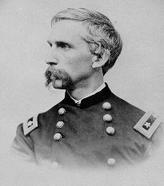 Creative Commons Attribution-ShareAlike 2.5 License, at your discretion.
Creative Commons Attribution-ShareAlike 2.5 License, at your discretion.
Introduction to Proofs is an undergraduate text. It is Inquiry-Based, sometimes called the Discovery Method (an older term is Moore Method). It is Freely available, so you can download it.
Please note: the canonical web page for the book is now hefferon.net/proofs. This site is mobile friendly and has a number of other advantages. If you make a link, please use that URL.
Click to download the compact version of Introduction to Proofs. It is only seven sheets so I copy this and hand it out on the first day. You can instead get a larger version that includes a Preface and some additional material at the end.
Also here are the first day's slides that introduce the class's style. In the first couple of weeks I show a few slides on logic each day, just covering enough to get students started. I have a handout on writing proofs, and a rubric for grading the hand-ins. And, I require that by the end of the semester they do their work in LaTeX, so to help with that I point them to the Short Introduction, and I distribute a Cheat sheet for LaTeX math.
There is a version of this book that is formatted differently at the web site for the Journal of Inquiry-Based Learning in Mathematics. (It may lag behind the version here in minor bug corrections.)
Finally, if you are into LaTeX then you can clone the repository.
This teaching style requires that students work directly with the mathematics. It is the core experience of the class. That is, this style shows students how to be, and in fact requires that they be, active learners.
I'll illustrate with a typical class session. As background, on the first day I explain that in this course we are developing each persons's ability to work independently. Students pledge that outside of class they will not work together and will not use any resources such as other books or the Internet. Several times during the semester I refer to the pledge, to keep folks on track and also to remind them that others are doing the same.
Consequently, on each day each student arrives having worked on each exercise, on their own. Usually they have four exercises. I shuffle cards to pick students to put proposed solutions on the board. (They negotiate among themselves who will do which problem, a student picked in the prior class will not be picked in this one, and each student is twice allowed to take a pass).
With that, the work starts. The class as a whole discusses those answers sentence by sentence, and sometimes word by word. These discussions are filled with misconceptions to work through and ideas that folks eventually come to see are not fruitful, as well as good ideas that, perhaps, initially have trouble getting heard. But the discussion eventually comes to an end and usually that end is correct.
I do my best to speak as little as I can, and not even to nod or frown. Sometimes I must guide, as with speaking up after the class has decided that the proof is OK to say, "Exhibiting the n=3 and n=5 cases is not enough to prove the result for all odd numbers."
The advantage of this format over a lecture is twofold. First, students own it. Second, students not only come to see what is right, but also to understand why what's wrong is wrong.
The discussion often takes the entire period. But sometimes we have time for another problem; by experience I know that some (such as proving that there are infinitely many primes) can give folks trouble and I try arrange the assignments so that we do these in class, where I can do a little extra guiding.
Class ends with a new set of problems to work on at home, and about once a week with the announcement that one of them is to be handed in at the start of the next class, to be graded.
Two comments. First, in the first few classes I spend fifteen minutes on slides that cover elementary logic. And, I grade on four things: class contribution, weekly hand-in problems, an in-class midterm, and an in-class final. I give credit both for mathematical correctness and for style. (The style that I ask for is simply full sentences, not beginning with a symbol, in paragraphs. And, over the semester I move students to formatting hand-in problems with LaTeX.) I weigh these four grades equally but students agree that discussion of the problems is the core experience. Success in the class flows from that.
Finally, I must acknowledge my debt to the Inquiry-based learning community and particularly to Prof Jensen-Vallin's wonderful Proofs book.
If you are an instructor who adopts this book then I'd be glad to hear your comments, including just the comment that you find it useful. (I save bug reports. and periodically revise.)
If you have some material that you are able to share back then I'd be interested to see it. Of course, I reserve the ability to choose whether to include it. I gratefully acknowledge all the contributions that I include, or I can keep you anonymous if you prefer. My contact information is on hefferon.net.
This text is Free.
Use it under either the
GNU Free Documentation License
or the  Creative Commons Attribution-ShareAlike 2.5 License, at your discretion.
Creative Commons Attribution-ShareAlike 2.5 License, at your discretion.
To bookstores: thank you for your concern about my rights. I give instructors permission to make copies of this material, either electronic or paper, and give or sell those copies to students. If you have further questions, don't hesitate to contact me at the email address on the top of this page.
To instructors: if you want to modify the text then feel free. However, I ask as a favor that you make clear which material is yours and which is mine. When I get questions or bug reports then having to work out what is happening gets frustrating all around unless the authorship is clear. It would be great if you could change the cover to include something like: "\fbox{The material in the appendix on logic is not from the main version of the text but has been added by Professor Jones of UBU. For this material contact \url{sjones@example.com}.}"
I have two other books. Both are Free. My Linear Algebra text is for a first US undergraduate course, covering the standard material while focusing on helping students develop mathematical maturity. It has been widely used for many years. My Theory of Computation covers Turing Machines, the Halting problem, Automata, and Complexity. It is now beta, being classroom-tested, and is under active development.

This site Joshua is provided by the University of Vermont.

Open Source software is a great idea. This project would not have gotten done without it.
(Credit for the logo to Matt Ericson.)